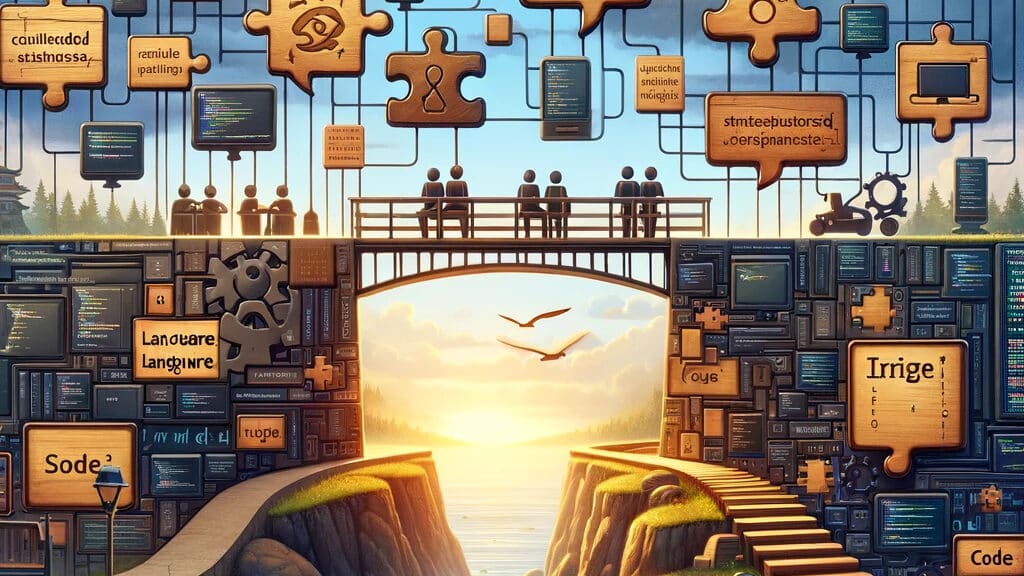Integrating LLM functionality to Code

Integrating Large Language Models (LLMs) into digital solutions allows the creation of intuitive and responsive innovative services, thanks to their ability to process and understand language like humans. These LLM models are great at creating and understanding text, making them helpful in improving user experience and analyzing content as we humans do. However, integrating LLM as part of the code logic can be tricky because their responses aren’t organized, which is a problem if you want to do more than develop a simple chatbot. For more advanced uses, it’s been hard to get AI models to give answers in a way that computers can efficiently work with. Unstructured LLM responses have made it challenging for developers to use these AI features in an efficient and reliable way. To help with this, companies that make LLMs have introduced new tools, like OpenAI Functions and Azure Assistants, that enable more complex use of these AI models in solutions.
Challenge of Unstructured Responses
The integration of Large Language Models (LLMs) into software development heralds a new frontier in creating intelligent, user-friendly applications. LLM capabilities open up a world of possibilities for enhancing applications with intuitive interfaces and sophisticated data analysis tools. However, the path to fully harnessing these potentials comes with challenges, like the unstructured nature of LLM outputs. It is not a new challenge; we have always had an interface with humans with the same problems; developers are just not used to the same behavior from software solutions.
The Nature of the Challenge
LLMs are designed to process and generate natural language, making their responses unstructured and fluid. While this makes for engaging and human-like interactions, it presents a significant hurdle when integrating these responses into code. Software applications, particularly those relying on automated processes and data analysis, require structured input to function correctly. This discrepancy between the unstructured outputs of LLMs and the structured input requirements of software systems necessitates a bridge — a way to translate the human use of language into code rigidity.
Impact on Code Integration
This integration challenge manifests in several ways, each impacting the efficiency and reliability of software applications. For instance, a task as seemingly straightforward as parsing a date from a conversational response can become complex. The date can be in typical format or, in the worst case, referencing the current date.
- 2024-12-31
- 12/31/2024
- 31-12-2024
- The third of May next year
- “Two weeks from today”
Similarly, extracting actionable data from responses that might include idiomatic expressions, nuanced sentiment, or conditional statements adds complexity to the parsing process. This variability increases the development time and costs and raises the risk of errors that can compromise application performance and user experience.

Understanding the Importance of Structured Data in Coding
Structured data is foundational to how applications are designed, developed, and function in software development. Data can range from data stored in relational databases to JSON objects. The significance of structured data is critical when integrating LLM outputs into coding projects, to ensure precision, efficiency, and scalability.
The Crucial Role of Structured Data
Structured data serves as the backbone of coding projects, enabling developers to:
- Predictably Process Data With a predefined structure, data can be automatically processed, eliminating the need for manual parsing and significantly reducing the potential for errors.
- Enhance Searchability and Organization Structured data can be quickly queried and retrieved, making it invaluable for applications that rely on fast data retrieval and analysis.
- Facilitate Data Integration When data from different sources share a standard structure, integrating these sources becomes simpler, paving the way for more complex and functional software ecosystems.
The Pitfalls of Unstructured LLM Outputs
Unstructured data, like the natural language responses generated by LLMs, poses several challenges:
- Increased Complexity in Data Parsing Extracting specific pieces of information from unstructured text requires sophisticated parsing algorithms and can lead to inaccuracies.
- Difficulty in Scalability As applications grow, managing and processing unstructured data becomes increasingly complex and resource-intensive.
- Variable Data Quality The lack of a consistent format can result in data quality issues, affecting the reliability of the application.
Traditional Techniques for Structuring LLM
Developers have used various techniques and developed proprietary tools to address the challenge, each offering unique advantages and considerations.
Prompt Engineering
Prompt engineering is a technique that involves crafting prompts to elicit structured responses from LLMs. By carefully designing the input, developers have been able to guide the model towards generating more predictable responses. Prompts could involve specifying the format of the response, such as asking for a list, a table, or a JSON object, thereby reducing the need for post-processing.
Post-Processing with Custom Scripts
Even with well-crafted prompts, LLM responses may require further refinement to achieve the desired level of structure. Developers often resort to writing custom scripts that parse and reformat the output. These scripts can range from simple text manipulation routines to complex algorithms that analyze and restructure content based on specific rules or patterns. But as talking with humans, we can never anticipate all potential forms of the LLM answers.
Bridging the Gap between LLM and the Code
Tools like OpenAI Functions and Azure Assistants offer capabilities specifically designed to facilitate this transformation, enabling developers to define structured LLM outputs for their applications. These tools allow developers more reliable use of LLM responses and processes in solutions. These new solutions enhance the functionality and reliability of solutions and open up new possibilities for innovation and user engagement.
Leveraging OpenAI Functions and Azure Assistants
OpenAI Functions and Azure Assistants are designed to aid in structuring data for applications. Both allow developers to define custom functions that can be called by the response from the LLM to perform specific tasks or structure data in a particular way. This direct interaction between the LLM and the application’s backend logic simplifies the integration process.
Utilizing APIs for Structured Responses
Both OpenAI Functions and Azure Assistants provide APIs that support structured data formats. By leveraging these APIs, developers can define JSON schema instructing LLMs to return data in JSON format, which inherently imposes a structure on the response. Standardizing expected responses with JSON Schema reduces the complexity of data parsing andalso improves prompting by using descriptions in the JSON Schema to define expected answers in more detail for each parameter in the JSON.
Example: AI Document Summary Solution Using Azure Functions
A practical application of these techniques is seen in an AI document summary solution A-CX created that utilizes Azure Functions. In this case, the Azure Function is defined as accepting unstructured text as input and returning a structured summary in a predefined format. Integrating LLM outputs with Azure Functions facilitates the automatic generation of summaries, showcasing the power of combining AI with cloud computing to streamline software development processes.
Challenges and Considerations
Rapid technological advancements come with challenges, like keeping the code up-to-date with APIs. Constant updates and improvements in OpenAI and Azure LLMs and their functionality will break your code. There is very little you can do to mitigate this. What you can do is to
- Use defined versions of API This will help you to keep your code in compliance with one single version of the API. The challenge remains, as the lifespan and support for API versions can be short.
- Notifications This will not help you with your code but will help you identify when problems arise.
- Read every release documentation Keeping yourself updated on new releases and versions of APIs and new services. This will help you to prepare for the updates.
- Avoid Preview and Beta releases You will be tempted to use the latest possible solutions, but be considerate of the impact on maintenance. Preview and Beta releases will not only constantly evolve but can also be terminated at any time.
Conclusion
Integrating Large Language Model (LLM) services like ChatGPT and Azure into software applications marks a significant step forward in making digital interactions more intuitive and intelligent. Despite the challenges posed by unstructured data, developers have devised innovative solutions, such as Azure Assistants, to structure LLM outputs for better application integration. These advancements not only enhance software functionality but also pave the way for future innovations where applications understand and interact with users in more complex and meaningful ways.
As we look to the future, the collaboration between AI researchers, developers, and service providers will be crucial in overcoming obstacles and unlocking the full potential of LLMs in software development. The journey is just beginning, but the possibilities are vast, promising a new era of software applications that are more responsive, intelligent, and aligned with human needs.
Are you curious about structured LLM responses? Contact us for more information.
